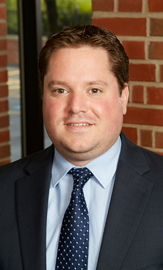While the New York Workers Compensation Law requires prompt medical treatment, injured workers often find their medical treatment anything but prompt. In the last few years the New York Workers Compensation Board implemented rules and regulations supposedly aimed at improving the process, however these rules have only made the process more difficult.
In the greater Syracuse area, where Meggesto, Crossett & Valerino, LLP concentrates its practice, most family practice doctors have declined to treat injured workers, even if they are long standing patients. The doctors primarily complain of cumbersome reporting requirements, insufficient payment, and the lack of respect given to doctors within the Workers’ Compensation system.
Despite the difficulty in obtaining treatment, injured workers are still required to provide medical evidence of their injury, including the treatment they require, their degree of disability, and their doctors’ recommendations. Traditionally, the Workers’ Compensation Board required medical providers to report injuries on a form know as a C-4. The medical provider was supposed to file this form with the Workers’ Compensation Board within 48 hours of treatment and then follow-up with another C-4 after the next visit. Generally, reports were required to be filed every 30-45 days thereafter.
However, the Workers Compensation Board recently updated the forms they require of doctors to a “family of C-4’s.” Now, not only are doctors still required to file the initial C-4, but they are now required to file a C-4.2 for each visit until permanency. At permanency, doctors are required to report their findings on a form called the C-4.3. And the forms went from one page to four pages!
In addition to requiring more forms, the Workers’ Compensation Board issued new Medical Treatment Guidelines in 2010, which set forth requirements for doctors to follow when treating injured workers. Of course, the guidelines require doctors to file certain forms before performing particular types of treatment. And, if a certain treatment falls outside the guidelines, the doctor is required to file a Variance in order to obtain authorization for such treatment.
At Meggesto Crossett and Valerino, LLP we understand the problems injured workers have finding medical treatment, obtaining permission and fighting variance denials. Our staff and attorneys understand the forms and the guidelines, and know what it takes to get a Variance granted. We also recommend that you discuss your medical needs with an attorney and be sure you have a strategy that will allow you to get the medical treatment you need to recover.
William W. Crossett, IV
Partner
Email: crossett@mcvlaw.com
Phone: 315-471-1664
Mr. Crossett concentrates his practice in the representation of Injured Workers. Since 1982, he has regularly appeared before the Workers’ Compensation Board and the Courts of New York. As an advocate for the Injured Worker, he has testified before the New York State Senate and has presented many Continuing Legal Education programs. Presently, Mr. Crossett serves as President of the Injured Workers Bar Association of New York and is an active member of Workers Compensation Law Division of the New York State Bar Association. Read more In 2012, he was inducted as a fellow in the College of Workers Compensation Lawyers. Mr. Crossett practices throughout Central New York with an office in Syracuse.

